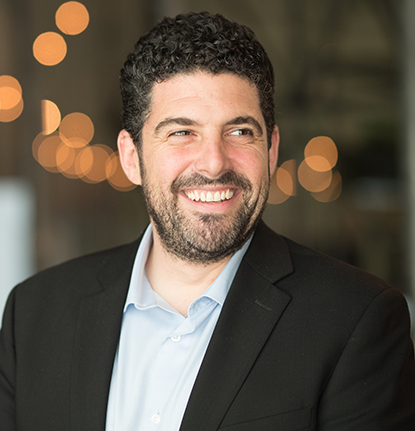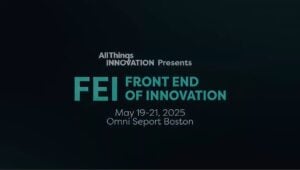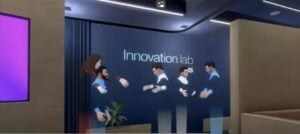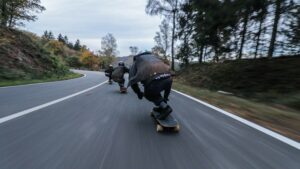In Part 1, we focused on the concept of transformational innovation and covered many angles of the theme, such as people-centricity, technology, and disruption. Here in Part 2, we ask, how might design thinking play into this scenario?
All Things Innovation would like to thank the participants: Leslie Shannon, Head of Trend & Innovation Scouting, Nokia; Milan Ivosevic, VP R&D, CooperSurgical; Prapti Jha, T.H. Chan School of Public Health, Harvard University; Sudha Ranganathan, Director Marketing & Talent Solutions, LinkedIn; Harsh Wardhan, Innovation Program Lead, Google; Nevada Sanchez, Co-Founder & VP, Core Tech. Eng., Butterfly Network, Inc.; Oscar Barranco Liebana, Innovation Director, FIFA World Cup 2022; Angelina Carvajal, Strategy & Innovation Partner, Sr. Dir. (Optum Advisory), UnitedHealth Group; and Cherie Leonard, Director of NA Insights, Colgate-Palmolive.
Design Forward
Prapti Jha observes,“There are two types of data, one is qualitative data and one is quantitative data. As a society, we have been over focused on the quantitative data, because it’s easier for our minds because it is data, it’s tangible, you can see it, these numbers and all those things. It’s not our fault, it’s how our brain works and we find comfort in that. But as a society, as we are moving faster, and we have technologies to support it, we need to equally balance that with qualitative data. And qualitative data is the behavioral insights, what I just said around aspirations. And it’s a new skillset that you have to bring into the equation. Let’s say if it’s a team, it’s like, ‘How do you have qualitative researchers on the team?’”
Jha continues, “And again, it’s around resourcing, it’s how an organization is set up, what it might look like when you’re talking about how do we get those insights because we don’t have a technology there to grab those things. Basically, we have a concept of extreme users, you all might already be aware of that, and maybe just talking to 10 people, but on a deeper level for an hour or so. And you come up with so many insights because they’re extreme users. And then you marry that with the quantitative data to come up with the insight. So it’s not 100%, just 10 people, what people said, because you get questions around that too. But, that’s how design thinking or leading with research might help.”
Technology certainly plays a key role in the process of transformation. As Harsh Wardhan notes, “Another thing that you mentioned around technology, not being bound by technology to think where innovation can take us, that is where desirability led innovation helps everything that Prapti said. Because, if you think about innovation, you’re already aware of the diagram of desirability, viability, feasibility, the standard product management tool that is being used in the industry. The center of that is the pinnacle of innovation, or the center of that where the innovation miracle happens. But, it is time that we lead with desirability. It is time that we lead with humans. And I’m going to go a step forward and I’m going to say humanity now.”
Creating the Right Culture
But in addition to technology, having an innovative culture might also be a key component to the entire project.
Cherie Leonard says, “I wanted to build on something you said, because I think the idea of all the different types of data and things is critical. It’s empowering the full team to take that time to do it. So, it doesn’t live with insights, or marketing, or design, it lives with everybody. And I think having that type of culture, going back to the people, is really critical. And giving people the time and the space to not only have those conversations with regular people, with consumers, but also then to take the time to digest it.
Leonard adds, “Because, it’s fascinating the things you pick up, especially in-home interviews and things, that they don’t say, right? But, you’re seeing it over their shoulder observing something, the coat on the chair. I think another way that I think is really interesting and fun to tap into that is to go to things. We do this for foresight all the time. What are the life hacks? Go to Indiegogo, what’s out there right now, what are people trying to solve that they’re not telling us, but they’re finding workarounds? And I feel like there’s so much richness and so much inspiration we can get and do so through a manner now of empowering the full team to get there.”
Taking that inspiration to a grass roots level will help improve design thinking as well as striving to look how new products may solve a problem in consumers’ lives.
As Leslie Shannon puts it, “I’ve been a technology innovation and trends scout for almost a decade now. There’s a million excellent ideas out there. It sounds reductive to say it, but great ideas are actually a dime a dozen. The ones that turn into something, that become a new product, that become a new technology, are the ones that genuinely solve a problem without costing too much. It’s that simple. And the cost doesn’t have to be money, it can be time, it can be hassle, it can be, ‘I’m used to my stethoscope.’ But, that’s it. And it sounds like kind of simple and straightforward, but that’s still really hard to do.”
Putting design thinking and the necessary research into context in today’s environment, Milan Ivosevic says, “I just want to point out one element of when we talk about data and this limitation, how far we can go with what’s available, and then we could talk about transformational innovations. Data that exists today out there are establishing a reference point that’s based on a non-existing thing. So, now if you want transformational innovation, let’s not start from the reference point that existence embedded. But there are different ways to carve the pumpkin. Let’s go around, let’s be creative in approach rather than like, ‘No, we have to force AI to go out there and dig that out for what’s sitting there.’”
Click here for the full All Things Innovation FEI Roundtable on transformational innovation.
Contributor
-

Seth Adler heads up All Things Insights & All Things Innovation. He has spent his career bringing people together around content. He has a dynamic background producing events, podcasts, video, and the written word.
View all posts












































































































































































